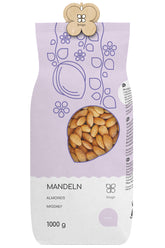Bye d'Arco Lapacho - Application and Properties
TABLE OF CONTENTS
- What is in Lapacho?
- Lapacho - the nutrient content
- Lapacho for external use
- Lapacho for internal use - Properties
- Lapacho and crab
- Lapacho – how to prepare it?
- Lapacho – Side effects and contraindications
- Summary
Lately, many exotic products have been coming to us. Spices, herbs, and teas are no different. This unusual-sounding name is nothing other than a product commonly known as "Inca tea." However, don't let the catchy name fool you. Lapacho has little in common with typical tea. It's worth mentioning that this beverage is made not from dried leaves, but from tree bark. Surprised? After all, this is just the beginning of the surprises. Aside from its exotic nature, lapacho can hold many other pleasant surprises. This product has recently arrived in the salons of scientific research. Let's add that it works very well there.
What is in Lapacho?
Lapacho is also known as Pau d'Arco. Tabebuia impetiginosa trees, which grow in South America, have been used for medicinal purposes for thousands of years. More specifically, it is the bark of the aforementioned plant. A traditional beverage is prepared from its inner layer. The first people to notice the health-promoting effects of lapacho on the body were the Incas. They called it the "source of life" and used it to treat various ailments. Only recently has this brew been subjected to more thorough scientific research. Until now, the mysticism surrounding lapacho was based only on observation. Today, we know about its highly beneficial effects on the human body, but we also know its risks. Despite this, it is becoming increasingly popular in Europe. This is due to the popularization of a healthy lifestyle, but also to a return to nature. Lapacho fits perfectly into existing trends.
Lapacho – the nutritional content
It is thanks to research on Pau d'Arco we know more precisely what substances are hidden in it. Since it is an infusion, one looks in vain for macronutrients such as proteins, carbohydrates and fats. However, this is not essential for the properties of lapacho. We find many micronutrients and active ingredients in it. We are talking about calcium, potassium, zinc, magnesium and iron. It also contains a lot of quercetin, carnasol, alkaloids and hydrobenzoic acids. In addition, we also find such a valuable coenzyme Q10 or steroid saponins. Finally, the main ingredients of this drink are lapachol and beta-lapachol. They determine the most beneficial properties of lapacho, but they can also have side effects. This is one of the reasons why the beneficial properties of the Tabebuia tree bark are often questioned. However, let's not be too alarmed because if used correctly, lapacho certainly brings many benefits.
Lapacho for external use
Although originally a lapacho brew was used only internally, it also works for external use. In the form of compresses, it can be helpful in combating various skin lesions. It can help treat acne lesions, soothe irritations, and nourish skin cells. In addition, thanks to its antiseptic properties, it can also be used as an adjunct in the treatment of fungal infections, yeast infections, and itching. It also supports wound healing by specifically disinfecting them and accelerating the scarring process. The same applies to various burns. It perfectly fights bacteria, but also viruses. Thanks to this, it can help fight recurring herpes. Sometimes lapacho extracts can be found in skincare cosmetics. In this form, it perfectly nourishes the skin, oxygenates it, and tones it, helping it stay healthy for longer.
Lapacho for internal use - Properties
There's no denying that lapacho has many other uses when used internally. Thanks to its antibacterial, antiviral, and antifungal properties, it's excellent for naturally boosting the body's immunity. Furthermore, lapacho bark extract can stimulate immune system cells, helping to fight any infections much faster. This infusion also has a positive effect on the functioning of the digestive system. It can minimize the excessive secretion of hydrochloric acid while stimulating mucus secretion. This condition will certainly have a positive effect on the treatment of stomach ulcers. It also contributes to Helicobacter pylori, which Pau d'Arco can effectively combat. Another promising study on lapacho is worth mentioning. Studies on rodents have found other potentially beneficial properties. These include reducing the activity of pancreatic lipase and thereby lowering blood triglyceride levels after a meal. But that's not all. The substances contained in the infusion have also been shown to have a hepatoprotective effect. This allows them to reduce the negative effects of toxins on liver cells. They also accelerate the growth of intestinal flora and simultaneously speed up digestion. The effect on the cardiovascular system is also significant. Lapacho increases red blood cell production and also has antiatherosclerotic properties. It can also significantly increase iron levels in the blood, which is especially important for people with anemia. Also worth mentioning is its hypoglycemic effect and its potential use in the treatment of rheumatism.
Lapacho and crab
We've reached the point that evokes the most extreme emotions, but to the point. There are a large number of supporters of lapacho as a universal cure for cancer. This is not surprising, because this brew has been used for this purpose from the very beginning. There is evidence that a decoction of this plant had a beneficial effect on the body in the treatment of leukemia or cervical cancer. In addition, it has been used in the form of decoctions, tinctures, or ointments, and in this form, among other places, it was used in Brazil, also for similar purposes. The question remains: how true is this and what modern science says about it? Unfortunately, this news is not very optimistic. The American Cancer Society has questioned these properties of lapacho. This is primarily due to the insufficient number of studies on the subject.
At the moment, we can only rely on research findings that indicate potential anti-cancer properties. Furthermore, some studies have shown that pau d'arco accelerates cancer processes. However, there is very positive information. It has been shown that it can destroy lung and liver cancer cells under laboratory conditions. Furthermore, lapacho decoction significantly reduced the spread of lung cancer in these studies.
Lapachol is also worth mentioning. It has a destructive effect on all types of sarcomas, but has virtually no effect on leukemias and adenocarcinomas. It's true that research conducted in the 1960s was very optimistic, but only for a limited time.
Lapacho – how to prepare it?
Preparing Lapacho infusion is very simple. Pour about half a liter of water into a pot and bring it to a boil. Then add 2 teaspoons of Pau d'Arco bark, brown it, and simmer over low heat for 5 minutes. Once this process is complete, let the finished infusion stand for 15 minutes, preferably with a lid. You can also boil this infusion longer or use less water. However, it should be noted that it will be significantly more intense. The resulting solution will certainly be a deep brown. Lapacho infusion, on the other hand, is characterized by a bitter-sour taste and a noticeable grassy note. Importantly, it does not contain caffeine.
Lapacho – Side effects and contraindications
To use lapacho safely, you should be aware of the potential risks. According to recent research, lapachol can lead to reduced blood clotting. It also interacts with some common medications, such as aspirin and anticoagulants. Of course, people suffering from hemophilia should also avoid using it. Pregnant and breastfeeding women should do the same. The effect of lapacho on the fetus is not yet fully understood. However, there are publications that indicate adverse effects. It can cause fetal harm and birth defects. It is also not recommended for young children. It is also worth mentioning that an overdose of lapacho can cause side effects. These include dizziness, nausea, vomiting, and diarrhea. Bye d'Arco can also be allergenic. Let's remember that this is a dietary supplement with many health-promoting properties, but we cannot treat lapacho as a medicine. All patients taking long-term medication should consult a physician regarding the use of this infusion. We are in no way demonizing their actions. Remember that all active ingredients can interact with medications, so please exercise caution when using it.
Summary
Lapacho is a truly remarkable plant. Its numerous positive effects on our body are undeniable. However, let's not forget the potential side effects of its use. Everything should be approached with common sense, and these words apply in this case as well. After all, it's an interesting alternative to the popular tea or yerba mate. Lapacho has something exotic about it, and perhaps this contributes to its growing popularity.
THE PUBLISHER'S CHOICE
Almonds 1 kg BIOGO
- £11.00
£13.00- £11.00
- Unit price
- / per
Walnuts 800 g BIOGO
- £8.00
£10.00- £8.00
- Unit price
- / per
Dried organic mango 400 g BIOGO
- £10.00
- £10.00
- Unit price
- / per
Dried White Mulberries 500 g ORGANIC
- £6.00
£7.00- £6.00
- Unit price
- / per
Dried organic figs 800 g BIOGO
- £27.00
- £27.00
- Unit price
- / per
Unpeeled buckwheat groats 1 kg BIOGO
- £3.00
£3.00- £3.00
- Unit price
- / per
Organic coconut flakes 500 g BIOGO
- £9.00
- £9.00
- Unit price
- / per
Organic oat flakes 600 g BIOGO
- £4.00
- £4.00
- Unit price
- / per
Organic cashew nuts 1 kg BIOGO
- £18.00
- £18.00
- Unit price
- / per
Milk thistle seeds 1 kg BIOGO
- £4.00
- £4.00
- Unit price
- / per









































































































































